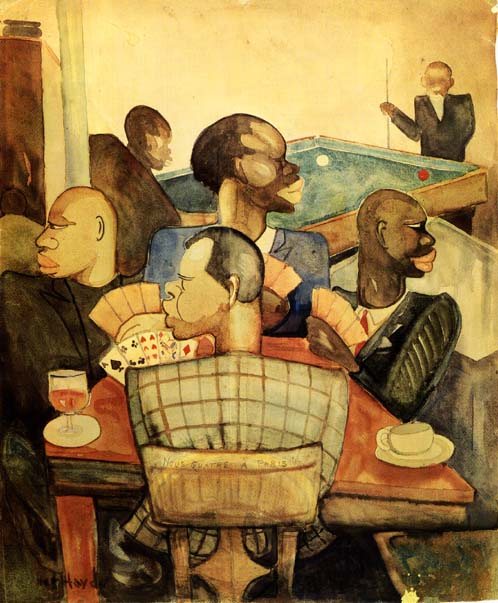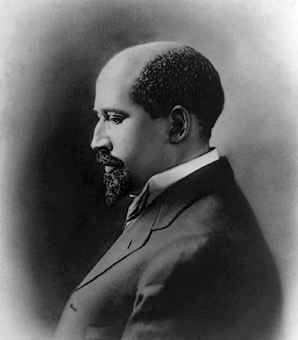HARLEM RENAISSANCE
The "Harlem Renaissance" movement was born in Harlem, New York and lasted a decade, from 1920 until 1930. It represented not only a literary, artistic and musical movement but also a social movement against segregation and the denial of their rights. So, African-Americans transformed Harlem into an artistic and literary center in order to exalt their culture, their history and gain confidence.
Here are some pictures, paintings and short biographies of Harlem Renaissance´s personalities :
Meta Vaux Warrick Fuller (1877-1968), one of the best sculptors who expressed the spiritual Harlem Renaissance. (n.d. Silver Print. Collection Solomon Fuller Bourne, Massachussetts).
Sculpture : "Ethiopia Awakening" (1914), by Meta Warrick Fuller. Bronze, 67 x 16 x 20. The Schomburg Center for Research in Black Culture, the New York Public Library.
Alain Leroy Locke (1886-1954), writer, educator, philosopher and sociologist, considered as a leader and chief interpreter of Harlem Renaissance. (by Carl Van Vechten, 1941, hand gravure print. The Studio Museum in Harlem).
Aaron Douglas (1899-1979), painter, considered as the "Father of Black American Art" because of his religious and Black history style. (n.d. Silver Print. The Schomburg Center for Research in Black Culture, the New York Public Library).
Painting : "The Crucifixion" (1927), by Aaron Douglas. Oil on board, 48 x 36. Collection Mr. and Mrs. William H. Cosby.
Cover for "The Crisis" magazine, May 1929 (published by W.E.B. Dubois), by Aaron Douglas. The Schomburg Center for Research in Black Culture, the New York Public Library.
Langston Hughes (1902-1967), writer and poet, also known for his engagement in the world of Jazz. (by Carl Van Vechten, 1939, hand gravure print. The Studio Museum in Harlem).
Florence Mills (1896-1927), the first Black international female superstar, one of the greatest entertainers and singing, dancing Jazz performers. (by James Van Der Zee, 1923, silver print. The James Van Der Zee Collection).
James Van Der Zee (at the left) with his father and two brothers (1886-1983), one of the best photographers of Harlem. (n.d. Silver print. The Schomburg Center for Research in Black Culture, the New York Public Library).

Palmer Hayden (born Peyton Cole Hedgeman) (1890-1973), painter, showed myths, dancers or musicians in his paintings where he depicted African art. (n.d. Silver print. The Schomburg Center for Research in Black Culture, the New York Public Library).
Painting : "Nous Quatre à Paris" (1930), by Palmer Hayden. Watercolor on paper, 22 x 18. The Metropolitan Museum of Art.
William H. Johnson (1901-1970), painter, based on primitive paintings and Black Christianity. (c. 1930-1935. Silver print. The National Museum of American Art, Simthsonian Institution, Washington D.C.).
Painting : "Jesus and the Three Marys" (1935), by William H. Johnson. Oil on board, 37 1/4 x 34 1/4. The Gallery of Art, Howard University, Washington D.C.

William Edouard Burghardt Dubois (1868-1963), writer and sociologist, one of the most influencial African-American intellectual and considered as a leader of the Harlem Renaissance. Also member of the N.A.A.C.P. (National Association for the Advancement of Colored People, created in 1909) dedicated to securing full civil and political rights for African-Americans. He used to hold many congresses such as the Pan African Congress.